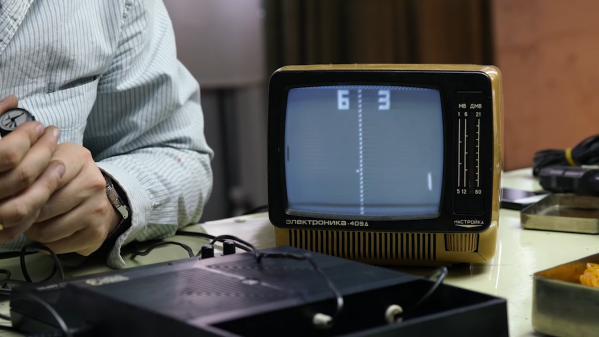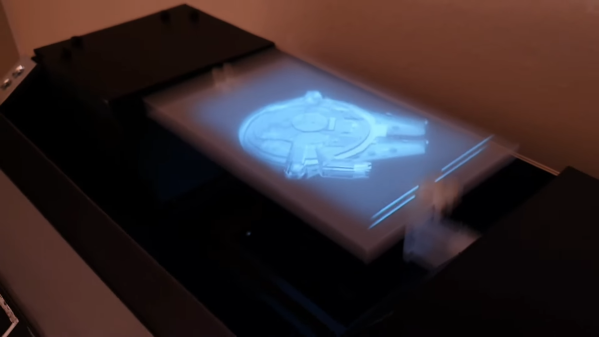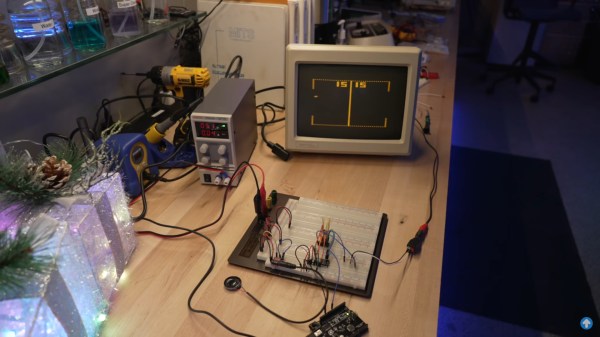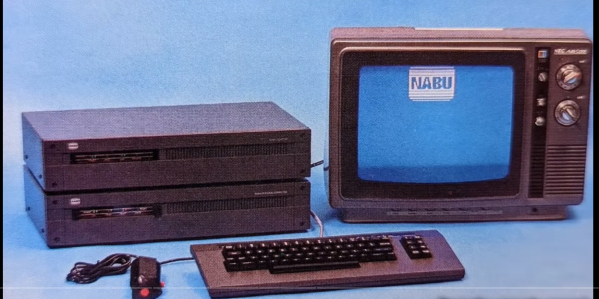In some ways, we’ve become a little jaded when it comes to news from Mars, which almost always has to do with the Ingenuity helicopter completing yet another successful flight. And so it was with the report of flight number 54 — almost. It turns out that the previous flight, which was conducted on July 22, suffered a glitch that cut the flight short by forcing an immediate landing. We had either completely missed that in the news, or NASA wasn’t forthcoming with the news, perhaps until they knew more. But the details of the error are interesting and appear related to a glitch that happened 46 flights before, way back in May of 2021, that involves dropped frames from the video coming from the helicopter’s down-facing navigational camera. When this first cropped up back on flight six, it was only a couple of missed frames that nearly crashed the craft, thanks to confusion between the video stream and the inertial data. Flight engineers updated the aircraft’s software to allow for a little more flexibility with dropped frames, which worked perfectly up until the aborted flight 53.
Soviet-Era Pong Console Is Easy To Repair
Many early home video game consoles were developed by American and Japanese companies: think Nintendo, Commodore, and Atari. But on the other side of the Iron Curtain, which was still very much in place in the 1980s, an entirely separate industry was built on names like Tesla and Elektronika. As a resident of the republic of Georgia, [Thomas] over at Workshop Nation has built up a sizeable collection of such Soviet-era hardware. A while back, he stumbled upon an Elektronika Video Sport 3, a 1990-vintage Pong-like video game console made in the USSR, and made a delightful video that shows him bringing it back to life.
 Like its Western counterparts, the Video Sport 3 is built around a dedicated chip, in this case a K145IK17. This is a Soviet clone of the GI AY-3-8500 that powered nearly every TV Pong console in the West, allowing it to run several variations of Pong as well as a simple target shooting game. Interestingly, the Video Sport 3 also has a “test” mode in which it outputs a test signal to help you adjust your TV settings — quite useful in the days of analog CRTs. It also came with a comprehensive user manual, as well as full schematics to help you repair it in case anything breaks.
Like its Western counterparts, the Video Sport 3 is built around a dedicated chip, in this case a K145IK17. This is a Soviet clone of the GI AY-3-8500 that powered nearly every TV Pong console in the West, allowing it to run several variations of Pong as well as a simple target shooting game. Interestingly, the Video Sport 3 also has a “test” mode in which it outputs a test signal to help you adjust your TV settings — quite useful in the days of analog CRTs. It also came with a comprehensive user manual, as well as full schematics to help you repair it in case anything breaks.
[Thomas]’s device didn’t immediately work, which is why he opened it up and tried to find any errors. The main board he found inside was a beautifully hand-made, single-layer board with around a dozen chips and lots of discrete components. Nothing seemed obviously broken, but [Thomas] decided to replace a few electrolytic capacitors as a precaution. This turned out to be enough to get the console working again — dodgy caps truly are a universal problem with older hardware.
A small Elektronika black-and-white TV that [Thomas] found earlier forms a perfect complement to the Video Sport 3. Together, they give us a glimpse into what a typical video game setup may have looked like in an early 1990s Soviet home. In fact, the Eastern Bloc supplied a reasonably wide selection of home computers, although not many people could actually buy them. Some truly bizarre machines were also produced for professional users.
Continue reading “Soviet-Era Pong Console Is Easy To Repair”
A Volumetric Display With A Star Wars Look And Feel
It may not exactly be what [Princess Leia] used to beg [Obi-Wan] for help, but this Star Wars-inspired volumetric display is still a pretty cool hack, and with plenty of extra points for style.
In some ways, [Maker Mac]’s design is a bit like a 3D printer for images, in that it displays slices of a solid model onto closely spaced planar surfaces. Sounds simple enough, but there are a lot of clever details in this build. The main component is a lightly modified LCD projector, a DLP-based machine with an RGB color wheel. By removing the color wheel from the projector’s optical path and hooking its sync sensor up to the control electronics, [Mac] is able to increase the framerate of the display, at the cost of color, of course. Other optical elements include a mirror to direct the projected images upwards, and a shutter harvested from an old pair of 3D TV glasses. Continue reading “A Volumetric Display With A Star Wars Look And Feel”
Resurrecting PONG, One Jumper Wire At A Time
Between 1976 and 1978, over one million Coleco Telstar video game consoles were sold. The Killer App that made them so desirable? PONG. Yep, those two paddles bouncing a ball around a blocky tennis court were all the rage and helped usher in a new era. And as [Dave] of Dave’s Garage shows us in the video below the break, the bringing the old console back to life proved simpler than expected!
Thankfully, the console is built around what [Dave] quite aptly calls “PONG on a chip”, the General Instrument AY-3-8500 which was designed to make mass production of consoles possible. The chip actually contains several games, although PONG was the only one in use on the Coleco.
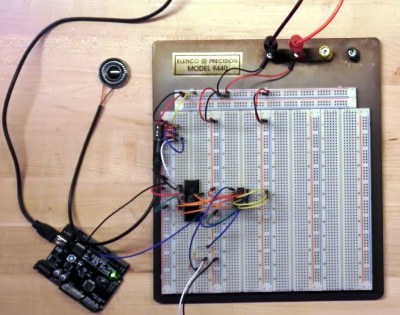 After removing the CPU from the non-functional console, [Dave] breathed life into it by providing a 2 MHz clock signal that was generated by an Arduino, of all things. A typical 2N2222 amplifies the audio, and a quick power up showed that the chip was working and generating audio.
After removing the CPU from the non-functional console, [Dave] breathed life into it by providing a 2 MHz clock signal that was generated by an Arduino, of all things. A typical 2N2222 amplifies the audio, and a quick power up showed that the chip was working and generating audio.
Video is smartly taken care of just as it was in the original design, by combining various signals with a 4072 OR gate. With various video elements and synchronization patterns combined into a composite video signal, [Dave] was able to see the game on screen, but then realized that he’d need to design some “paddles”. We’ll leave that up to you to watch in the video, but make sure to check the comments section for more information on the design.
Is a breadboarded PONG console not retro enough for you? Then check out this old school mechanical version that was found languishing in a thrift store.
Continue reading “Resurrecting PONG, One Jumper Wire At A Time”
NABU PC – A 1984 Z-80 Computer You Can Buy Today
Want to hack on brand new 8-bit 1980s hardware? Until recently you needed a time machine, or deep pockets to do this. All that has recently changed with the NABU PC. A retro machine that can be bought brand new for $59.99, (plus shipping) no time machine needed.
[Adrian] has one in his Digital Basement, and breaks it all down for us. The NABU PC was a Canadian computer. Designed to connect to the cable TV network, the standard system had no internal secondary storage. You read that right; the NABU used the cable network to download and play games, view documents — just about anything you’d want to do with a computer. Cable modems back in the 80s — maybe someone did have a time machine?
Unfortunately, the NABU network failed. Not due to the PC’s hardware, but because the cable system back then was not designed for bidirectional data. While the NABU PC did see a limited release in Canada, was never widely successful. When production was shut down, the machines couldn’t be liquidated, as they didn’t do anything without the network. So in the warehouse, they sat, until this month, where can find them being sold on eBay.
So what’s inside a NABU? It starts with a Z-80 CPU sporting 64 kB of RAM. A TMS9918 handles video, while a General Instrument AY-3-8910 does the sound. There are also two UARTs. An 8251 for serial io to the keyboard and joysticks, and a high-performance UART chip to handle comms with the network adapter. The keyboard is loaded with good old ALPS switches, and [Adrian] found it rather impressive.
That’s all well and good, but what can you actually do with a NABU PC? Right now, not much. The ROM software comes up and looks for the network adapter, then complains when it doesn’t find it. This means it’s hacking time! An army of retrocomputing enthusiasts are already working on bringing back the NABU computer. Check [Adrian]’s video description for all the documentation links, and check here on Hackaday for the latest updates!
This isn’t our first time watching this sort of liquidation — remember the HP touchpad?
Continue reading “NABU PC – A 1984 Z-80 Computer You Can Buy Today”
Mommy, Where Do Ideas Come From?
We wrote up an astounding old use of technology – François Willème’s 3D scanning and modeling apparatus from 1861, over 150 years ago. What’s amazing about this technique is that it used absolutely cutting-edge technology for the time, photography, and the essence of a technique still used today in laser-line 3D scanners, or maybe even more closely related to the “bullet time” effect.
 This got me thinking of how Willème could have possibly come up with the idea of taking 24 simultaneous photographs, tracing the outline in wood, and then re-assembling them radially into a 3D model. And all of this in photography’s very infancy.
This got me thinking of how Willème could have possibly come up with the idea of taking 24 simultaneous photographs, tracing the outline in wood, and then re-assembling them radially into a 3D model. And all of this in photography’s very infancy.
But Willème was already a sculptor, and had probably seen how he could use photos to replace still models in the studio, at least to solidify proportions. And he was probably also familiar with making cameos, where the profile was often illuminated from behind and carved, often by tracing shadows. From these two, you could certainly imagine his procedure, but there’s still an admirable spark of genius at work.
Could you have had that spark without the existence of photography? Not really. Tracing shadows in the round is impractical unless you can fix them. The existence of photography enabled this idea, and countless others, to come into existence.
That’s what I think is neat about technology, and the sharing of new technological ideas. Oftentimes they are fantastic in and of themselves, like photography indubitably was. But just as often, the new idea is a seed for more new ideas that radiate outward like ripples in a pond.
Hackaday Podcast 188: Zapping Cockroaches, Tricking AIs, Antique 3D Scanning, And Grinding Chips To QFN
It’s déjà vu all over again as Hackaday Editor-in-Chief Elliot Williams gets together with Staff Writer Dan Maloney to look over the best hacks from the past week. If you’ve got a fear of giant cockroaches, don’t worry; we’ll only mention the regular ones when we talk about zapping them with lasers. What do you need to shrinkify an NES? Just a little sandpaper and a lot of finesse.
Did you know that 3D scanning is (sort of) over a century old? Or that the first real microcomputer dates all the way back to 1972 — and isn’t one of those blinkenlight deals? And watch out for what you tell GPT-3 to ignore — it might just take you very seriously. We’ll touch on solar-powered cameras, a compressor of compressors, and talk about all the unusual places to find lithium batteries for your projects. It’s an episode so good you might just want to listen to it twice!
(In case you’re wondering about all this “twice” stuff — Elliot forgot to hit record on the first take and we had to do the entire podcast over again. Oh, the humanity!)
Check out the links below if you want to follow along, and as always, tell us what you think about this episode in the comments!


